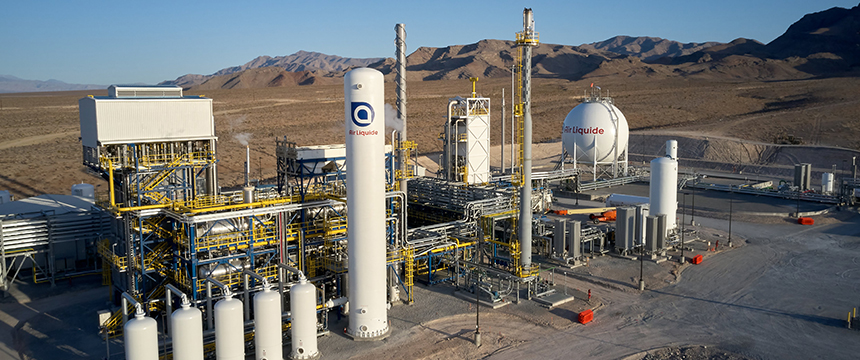
On Thursday, January 11, 2024, the Texas Hydrogen Alliance (“THA”) hosted “All Things Hydrogen,” an in-person educational and networking reception held in Houston, Texas at the offices of Foley & Lardner LLP (“Foley”). The THA is a community of approximately 35 companies performing hydrogen-related work in and around the State of Texas and is dedicated to positioning Texas as a premier player in the expansion of hydrogen-related clean energy and advocating for policies, legislation and rulemaking that will incentivize companies to explore the economic and environmental opportunities for hydrogen in Texas. The event was very well attended, with over 150 people participating in person and electronically. Representatives of the THA, Rysted Energy, the Railroad Commission of Texas (the “RRC”) and GTI Energy (“GTI”) updated the crowd on hydrogen-related happenings in the state, including the status of the HyVelocity Hub.
Craig Chick, a lobbyist in Foley’s Austin Office, represents the THA. Mr. Chick kicked off the event by introducing an assortment of officials from local, state and federal offices and the THA’s executive director, Susan Shifflett. Ms. Shifflett provided an overview of the THA and educated attendees about the group’s focus and goals. The THA was formed in 2021 by certain key industry stakeholders to educate and advocate for effective policies, legislation and rulemaking that will enable and incentivize the effective pursuit of hydrogen opportunities. The THA will also be an entity with industry and technical expertise that can facilitate dialog and convene key stakeholders to enable the growth of a hydrogen economy and markets throughout the state.
Ms. Shifflett also provided a summary of the two THA bills recently passed by the Texas Legislature with the help and guidance of Mr. Chick and Foley. The first bill was HB 2847. HB 2847 provided regulatory primacy to the RRC and created the Hydrogen Production Policy Council (the “Council”), which is an 11-member board comprised of public and industry members active in the hydrogen space. The Council is charged with the study of production, pipeline transportation and storage of hydrogen. The second THA bill is HB 4885. HB 4885 created the Texas Hydrogen Infrastructure, Vehicle and Equipment grant program, along with the funding of $16 million to initiate the program within the Texas Emissions Reduction Program at the Texas Commission on Environmental Quality.
Next, Marina Domingues, Ph.D., Vice President – Hydrogen Americas of Rysted Energy kicked off the presentations with a statistical breakdown of why Texas will be a significant force in the global hydrogen industry. Her discussion broke down the historical growth of hydrogen projects throughout the U.S., noting that hydrogen capacity is expected to grow by 40% through 2050 due, largely in part, to Inflation Reduction Act (“IRA”)-driven funding and projects. Interestingly, she noted that 47% of clean hydrogen supply during that time period is expected to come from Texas (with 75% of that Texas-based production coming from the Gulf Coast region). Doctor Domingues then pivoted her presentation to capital needed to fund hydrogen production growth, noting that the $7 billion of funds to be invested/granted by the Department of Energy should stimulate an additional $40 billion of private investment. And, coupling those funds with IRA tax credits can stimulate over $200 billion of funding for hydrogen projects by 2032. In short, hydrogen production/supply is poised for growth, which when coupled with the anticipated 6x growth in hydrogen demand is promising for Texas-based hydrogen investors.
After the Rysted Energy presentation, Natalie Dubiel, an attorney with the RRC, spoke about the RRC’s involvement with hydrogen-related projects going forward. Per H.B. 2847, the RRC has jurisdiction over pipeline transportation and underground storage of hydrogen, but the RRC lacks jurisdiction over hydrogen production. The bill also established the Council, which has the task of studying the RRC’s hydrogen-related policies and making recommendations about hydrogen development going forward. Ms. Dubiel noted that intrastate hydrogen pipelines are regulated as common carriers in Texas and that the RRC has jurisdiction to remedy rate discrimination through complaint-based regulation. Finally, she noted that the RRC has permitting authority related to hydrogen pipelines and underground storage authority, noting that intrastate pipelines require the filing of a T-4 permit, and underground storage permits will depend on the “type” or “color” of hydrogen being stored.
Last, Brian Weeks, Sr. Director, Business Development Research Operations for GTI and a member of the Council, gave an overview of the status of the Texas-based HyVelocity H2 Hub, which is one of 7 clean hydrogen hubs selected to receive funding from the DOE. Mr. Weeks spoke to several advantages the HyVelocity H2 Hub has relative to other projects, noting the proximity to the Gulf Coast makes the project ideally suited to take advantage of (a) a broad base of industry energy customers across multiple demand segments, (b) a sizeable renewable energy market (including 36GW of wind power and 15GW of solar power) and access to low-cost natural gas production, and (c) a network of over 1,000 miles of hydrogen pipelines – the largest such network in the nation. It is projected that the HyVelocity H2 Hub will make up 33% of U.S. hydrogen production capacity, create up to 45,000 direct jobs and provide meaningful economic benefits to the Gulf Coast region and the state in general. Currently, the HyVelocity H2 Hub “ecosystem” has 7 project sponsors consisting of major industry players, 3 hub organizers (including GTI, the Center for Houston’s Future and the University of Texas at Austin), over 20 community, workforce and development organizations, 17 identified hydrogen offtakers, and over 100 energy and industrial gas supporters. So, the project has robust support and is poised to create an integrated hydrogen ecosystem that will lead to the creation and consumption of clean fuels, ammonia, numerous industrial uses of hydrogen and clean power generation throughout the region. Mr. Weeks noted the HyVelocity H2 Hub is only in its infancy, and while the DOE-funding is a critical component to the early success of the project, there is much work to be done to develop project plans, permit processes and ultimate construct facilities and ramp-up production. Translation – there is much work to be done, but the future of hydrogen in Texas is promising.
Based on the overall discussion, it’s clear is that the next several years and decades will be an exciting period of growth for hydrogen-related projects and billions of dollars in investment throughout the State of Texas. The event proved that there is significant interest from capital and industry players surrounding hydrogen, and Texas is making economic, statutory and regulatory investments to make the state a real player in the world of hydrogen going forward. With the advent of the IRA and the DOE’s funding of the HyVelocity H2 Hub, it feels like the interest and optimism surrounding hydrogen is sincere and getting traction, and is not just a bunch of . . . hot air.
